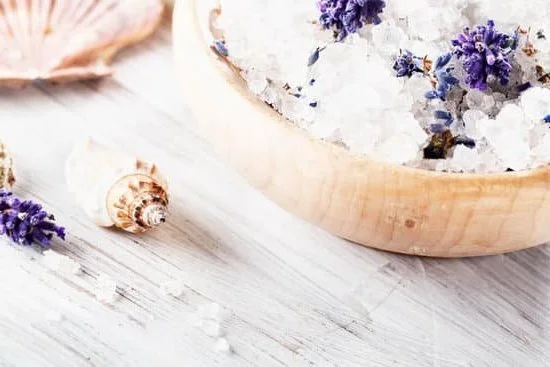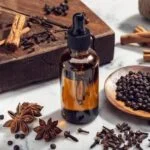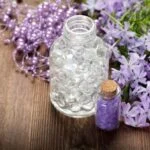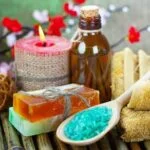Aromatherapy with massage and acupressure has become a popular holistic approach to promoting health and well-being. The use of essential oils in conjunction with massage and acupressure techniques can provide numerous benefits for the body and mind. In this article, we will explore the advantages of aromatherapy in massage and acupressure, as well as how essential oils work in these practices.
Understanding the impact of aromatherapy in massage and acupressure begins with a comprehension of how essential oils interact with the body. By choosing the right essential oils and applying them through massage or acupressure, individuals can experience relief from various physical ailments and emotional stress. The combination of scent, touch, and pressure creates a powerful synergy that enhances the therapeutic effects of these practices.
Furthermore, incorporating aromatherapy into massage and acupressure involves careful selection of essential oils tailored to individual needs. Whether seeking relaxation, pain relief, or energizing effects, specific essential oils can be strategically blended to address these concerns. With a deeper understanding of how different essential oils work, individuals can maximize the benefits of aromatherapy in their massage and acupressure sessions.
Understanding Aromatherapy
Aromatherapy is a holistic healing treatment that uses natural plant extracts, known as essential oils, to promote physical, mental and emotional well-being. When combined with massage and acupressure, the benefits of aromatherapy can be enhanced, providing a more therapeutic and relaxing experience.
The Science Behind Aromatherapy
Essential oils work in aromatherapy through the sense of smell and skin absorption. When inhaled, the molecules in the essential oils stimulate the olfactory system, sending signals to the brain’s limbic system – the area that controls emotions and memories. This is why specific scents are often associated with certain emotions or memories. When applied topically during massage or acupressure sessions, essential oils are absorbed through the skin, entering the bloodstream and promoting various physiological effects.
Benefits of Aromatherapy With Massage and Acupressure
When essential oils are incorporated into massage and acupressure sessions, they can enhance relaxation, reduce stress and anxiety, alleviate pain and inflammation, improve circulation, aid in digestion, and boost overall mood. For example, lavender essential oil is commonly used for its calming properties, while peppermint essential oil is favored for its invigorating effect.
Choosing the Right Essential Oils
Selecting the right essential oils for aromatherapy with massage and acupressure is crucial. Different oils have different properties and benefits. It’s important to consider individual preferences, medical conditions, allergies, and desired effects when choosing which essential oils to use in combination with massage or acupressure sessions. Consultation with a qualified aromatherapist or practitioner can help determine which essential oils are best suited for individual needs.
Choosing the Right Essential Oils for Aromatherapy With Massage and Acupressure
Aromatherapy is the use of essential oils to promote physical, mental, and emotional well-being. When combined with massage and acupressure, it can enhance the overall experience and provide additional therapeutic benefits. However, choosing the right essential oils is crucial to ensure a successful aromatherapy session.
Understanding Essential Oils
Essential oils are natural extracts from plants that have been used for centuries for their healing properties. They are highly concentrated and should be used with caution. Each essential oil has its own unique aroma and therapeutic properties, so it’s important to understand the specific benefits of each oil before incorporating them into massage or acupressure.
Matching Essential Oils With Massage and Acupressure Techniques
Different essential oils can be selected based on the specific needs of the individual receiving the treatment. For example, lavender is known for its calming properties and can be used in massages to promote relaxation, while peppermint is invigorating and can be used in acupressure to relieve headaches or muscle tension. It’s important to match the scent and properties of the oil with the desired outcome of the massage or acupressure session.
Consulting With a Professional
For those who are new to aromatherapy with massage and acupressure, consulting with a qualified practitioner is recommended. A professional can assess individual needs and recommend specific essential oils based on personal preferences, health conditions, and treatment goals. They can also provide guidance on proper dilution methods and safe application techniques for an effective aromatherapy experience.
The Science Behind Acupressure and Its Combination With Aromatherapy
The combination of aromatherapy with massage and acupressure has been gaining popularity in the field of alternative therapy. Aromatherapy, the use of essential oils to promote physical and psychological well-being, is often incorporated into massage and acupressure sessions to enhance their therapeutic effects. The science behind this combination lies in the ability of essential oils to interact with the body’s limbic system, influencing emotions, stress levels, and overall physiology.
When essential oils are used in conjunction with massage and acupressure, they can amplify the benefits of these practices. Aromatherapy can help relax muscles, reduce inflammation, and alleviate pain during a massage or acupressure session. In addition, certain essential oils like lavender or chamomile have calming properties that can enhance relaxation and stress relief.
Research has also shown that aromatherapy can have a positive impact on mood and mental health when combined with massage and acupressure. For example, inhaling certain essential oils during a session can help reduce anxiety and improve overall emotional well-being. When applied topically during a massage or acupressure session, essential oils can also promote better circulation, skin health, and provide additional therapeutic benefits.
| Benefits | Effects |
|---|---|
| Relaxation of muscles | Increase relaxation and stress relief |
| Reduce inflammation | Promotes better circulation |
| Alleviate pain | Positive impact on mood and mental health |
In summary, the combination of aromatherapy with massage and acupressure offers a holistic approach to healing by addressing both physical and emotional well-being. By understanding the science behind how essential oils work in conjunction with these therapeutic practices, individuals can make informed choices about incorporating aromatherapy into their wellness routines. Whether seeking professional treatment or exploring at-home options, the potential benefits of this combination make it a valuable addition to any wellness plan.
Techniques and Methods
Aromatherapy, when combined with massage and acupressure, can create a truly holistic approach to wellness. The incorporation of essential oils into these traditional healing practices can enhance the overall experience and provide additional therapeutic benefits. Aromatherapy with massage and acupressure involves various techniques and methods that aim to maximize the effects of both the essential oils and the manual therapies.
Here are some techniques and methods for incorporating aromatherapy into massage and acupressure:
1. Diffusion: Utilize a diffuser to disperse the aroma of essential oils in the treatment room, creating a soothing atmosphere for the client before, during, and after the session.
2. Topical Application: Add a few drops of essential oil to a carrier oil or lotion and apply it directly to the skin during massage or acupressure. This method ensures that the therapeutic properties of the essential oils are absorbed through the skin, further enhancing the benefits of the treatment.
3. Inhalation: Encourage deep breathing by placing a drop of essential oil on a tissue or cotton ball for clients to inhale during their session. This allows for direct inhalation of the aromatic compounds, promoting relaxation and emotional balancing.
By incorporating these techniques into their practice, massage therapists and acupressure practitioners can create a multi-sensory experience for their clients that not only addresses physical discomfort but also promotes mental and emotional well-being through aromatherapy with massage and acupressure. With proper training, practitioners can effectively integrate essential oils into their treatments to achieve optimal results for their clients.
Aromatherapy with massage and acupressure is more than just about applying pleasant scents; it’s about harnessing the therapeutic properties of essential oils to complement traditional healing modalities in order to facilitate holistic wellness in individuals.
Case Studies
Aromatherapy, when combined with massage and acupressure, has shown promising results in promoting relaxation, reducing stress, and relieving pain. One case study involved a patient with chronic back pain who underwent regular aromatherapy massage sessions using lavender essential oil. After a few weeks, the patient reported a significant reduction in pain intensity and improved flexibility in the affected area. This demonstrates the potential of aromatherapy to enhance the therapeutic effects of massage and acupressure.
Another success story involves a client suffering from anxiety and insomnia, who received acupressure treatments paired with bergamot essential oil. The combination of gentle pressure on specific acupoints along with the calming aroma of bergamot oil resulted in improved sleep quality and reduced anxiety levels for the client. These examples highlight how aromatherapy can complement traditional massage and acupressure techniques to address various physical and emotional health concerns.
Furthermore, a study conducted on cancer patients undergoing chemotherapy found that the incorporation of aromatherapy into their massage therapy sessions led to decreased nausea and vomiting. The use of ginger and peppermint essential oils during massages helped alleviate chemotherapy-induced symptoms, improving the overall well-being of the patients. This illustrates how aromatherapy, when integrated into massage and acupressure treatments, can offer relief from side effects of medical conditions and treatments.
| Case Study | Success Story |
|---|---|
| Patient with Chronic Back Pain | Reduction in pain intensity and improved flexibility |
| Client Suffering from Anxiety and Insomnia | Improved sleep quality and reduced anxiety levels |
| Cancer Patients Undergoing Chemotherapy | Decreased nausea and vomiting |
DIY Aromatherapy Blends for at-Home Massage and Acupressure Sessions
Aromatherapy can be a wonderful addition to at-home massage and acupressure sessions, providing a natural way to enhance relaxation and promote overall well-being. Creating your own DIY aromatherapy blends allows you to tailor the scents to your preferences and needs, ensuring a personalized and effective experience. Here are some essential oils that are commonly used in aromatherapy with massage and acupressure, as well as some simple blends you can try at home:
- Lavender: Known for its calming and soothing properties, lavender is perfect for promoting relaxation during massage or acupressure sessions.
- Peppermint: With its invigorating scent, peppermint is great for boosting energy and alleviating headaches when used in combination with acupressure.
- Chamomile: This gentle and sweet-smelling oil is excellent for reducing stress and anxiety, making it a wonderful addition to your aromatherapy blend.
When creating your DIY aromatherapy blends, it’s important to dilute the essential oils properly with a carrier oil such as jojoba or sweet almond oil. A general rule of thumb is to use about 10-15 drops of essential oil per ounce of carrier oil. You can also use these blends in an aromatherapy diffuser to fill the room with the soothing scents as you practice self-massage or perform acupressure on yourself.
With a little experimentation and research, you can easily create custom blends that cater specifically to your needs. Whether you’re looking to unwind after a long day or boost your energy levels, incorporating aromatherapy into your at-home massage and acupressure sessions can elevate the experience and provide added therapeutic benefits.
Finding a Qualified Practitioner for Aromatherapy With Massage and Acupressure
In conclusion, incorporating aromatherapy into massage and acupressure can greatly enhance the overall experience and benefits of these therapeutic techniques. The use of essential oils in aromatherapy has been proven to have a positive impact on both physical and mental health, leading to improved relaxation, pain relief, and overall well-being. When combined with massage and acupressure, the healing properties of essential oils are further amplified, resulting in a more holistic approach to health and wellness.
Understanding the science behind how essential oils work in conjunction with massage and acupressure is crucial in choosing the right oils for each individual’s needs. By selecting the appropriate essential oils based on their specific benefits and properties, practitioners can create customized blends that cater to their clients’ unique requirements. This personalized approach ensures that the aromatherapy experience complements and enhances the effects of massage and acupressure.
For those interested in experiencing the benefits of aromatherapy with massage and acupressure, it is important to find a qualified practitioner who has expertise in both areas. Whether seeking professional sessions or exploring DIY blends for at-home use, choosing a practitioner who understands how to incorporate aromatherapy into massage and acupressure will ensure a safe and effective treatment.
With proper guidance from an experienced practitioner, individuals can harness the full potential of aromatherapy in combination with massage and acupressure for improved health and wellness.
Frequently Asked Questions
What Is Aromatherapy Acupressure?
Aromatherapy acupressure combines the use of essential oils with acupressure massage techniques to promote relaxation and healing. By targeting specific pressure points on the body, it aims to improve overall well-being and alleviate various ailments.
What Does an Aromatherapy Massage Do?
An aromatherapy massage involves the use of essential oils during a traditional massage session. The essential oils are chosen for their specific therapeutic properties, such as lavender for relaxation or peppermint for invigoration. This type of massage can help reduce stress, relieve muscle tension, and improve overall mood and well-being.
What Are the Disadvantages of Aromatherapy Massage?
Some potential disadvantages of aromatherapy massage include possible allergic reactions to the essential oils used, especially for those with sensitive skin or allergies. Additionally, there may be limited scientific evidence supporting the claimed benefits of aromatherapy, leading some individuals to question its effectiveness.
Lastly, this type of massage may be more costly than traditional massages due to the use of specialized essential oils.

Are you looking for a natural way to improve your health and wellbeing?
If so, aromatherapy may be the answer for you.





